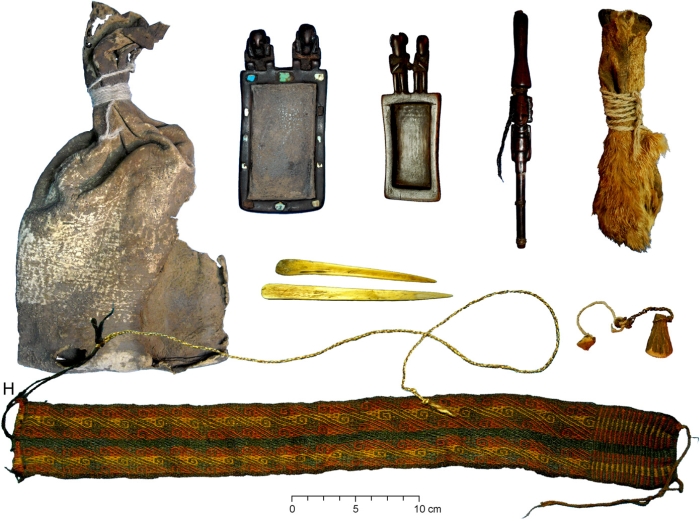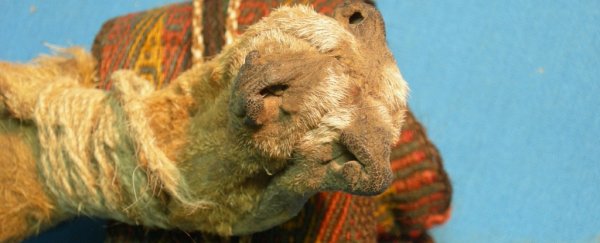Native American shamans living in South America 1,000 years ago had quite the pharmacopoeia in their toolkits. A shaman's bag found in Bolivia contained a special pouch with traces of multiple psychotropic plants inside, as well as a pretty impressive assembly of paraphernalia.
In addition to the pouch, stitched together from three fox snouts, the leather bag contained two wooden tablets for grinding psychotropic plants into snuff, two bone spatulas, a woven headband, and a tube with two human hair braids attached, for smoking hallucinogenic plants.
"We already knew that psychotropics were important in the spiritual and religious activities of the societies of the south-central Andes, but we did not know that these people were using so many different compounds and possibly combining them together," said anthropologist Jose Capriles of Penn State.
"This is the largest number of psychoactive substances ever found in a single archaeological assemblage from South America."
Throughout history, humans around the world have used plant-based substances to alter perception, often in religious or ritual contexts. Discerning what these plants were, and how they were used, can tell us a lot about what ancient humans knew about plants, and which plants were culturally important.
Archaeologists in 2008 and 2010 weren't specifically searching for psychotropics, but evidence of human habitation in the dry stone shelters of the Sora River Valley Bolivia.
There, in a cave called the Cueva del Chileno, they found the leather bundle. Radiocarbon dating of the leather wrapping put its age at around 1,000 years.
 The leather bag and its contents. (Miller et al., PNAS, 2019)
The leather bag and its contents. (Miller et al., PNAS, 2019)
Using a scalpel, the team took a small scraping of the material coating the inside of the fox pouch and analysed it using liquid chromatography and tandem mass spectrometry - techniques for identifying minute amounts of substances.
The findings indicate that the pouch could have contained four or five different plants - but definitely at least three.
"Chemical traces of bufotenine, dimethyltryptamine, harmine, and cocaine, including its degradation product benzoylecgonine, were identified, suggesting that at least three plants containing these compounds were part of the shamanic paraphernalia," the researchers wrote in their paper.
"This is also a documented case of a ritual bundle containing both harmine and dimethyltryptamine, the two primary ingredients of ayahuasca [a plant-based psychedelic tea]."
It's unknown how widespread the use of ayahuasca was, or how long it has been used - perhaps millennia, or merely centuries - so this adds a significant data point.
Of course, it's impossible to gauge from this sample how the plants were prepared, but it does show that the inhabitants of the Sora River Valley knew about the plants' properties 1,000 years ago.
In fact, the owner of this bag was likely a shaman. These spiritual leaders were the ones who knew how to use plants to reach an altered state of perception in order to communicate with the spirit world.
The kit also demonstrates that, in addition to an impressive knowledge of plants and their properties, these people went to significant effort to obtain psychotropics - illustrating the importance of that connection to the 'spirit world'.
"None of the psychoactive compounds we found come from plants that grow in this area of the Andes, indicating either the presence of elaborate exchange networks or the movement of this individual across diverse environments to procure these special plants," said archaeologist Melanie Miller of the University of Otago.
"This discovery reminds us that people in the past had extensive knowledge of these powerful plants and their potential uses, and they sought them out for their medicinal and psychoactive properties."
The research has been published in PNAS.
